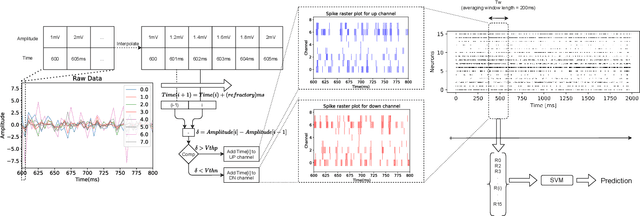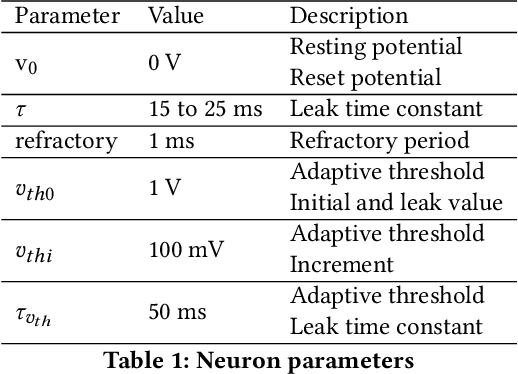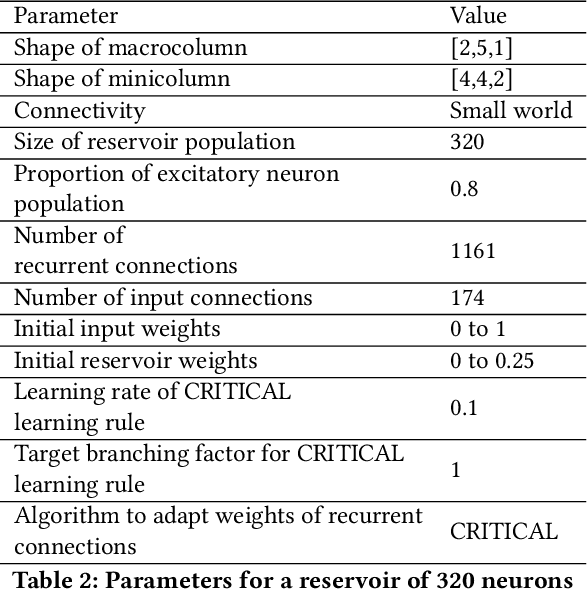Signals to Spikes for Neuromorphic Regulated Reservoir Computing and EMG Hand Gesture Recognition
Paper and Code
Jul 04, 2021



Surface electromyogram (sEMG) signals result from muscle movement and hence they are an ideal candidate for benchmarking event-driven sensing and computing. We propose a simple yet novel approach for optimizing the spike encoding algorithm's hyper-parameters inspired by the readout layer concept in reservoir computing. Using a simple machine learning algorithm after spike encoding, we report performance higher than the state-of-the-art spiking neural networks on two open-source datasets for hand gesture recognition. The spike encoded data is processed through a spiking reservoir with a biologically inspired topology and neuron model. When trained with the unsupervised activity regulation CRITICAL algorithm to operate at the edge of chaos, the reservoir yields better performance than state-of-the-art convolutional neural networks. The reservoir performance with regulated activity was found to be 89.72% for the Roshambo EMG dataset and 70.6% for the EMG subset of sensor fusion dataset. Therefore, the biologically-inspired computing paradigm, which is known for being power efficient, also proves to have a great potential when compared with conventional AI algorithms.
 Add to Chrome
Add to Chrome Add to Firefox
Add to Firefox Add to Edge
Add to Edge